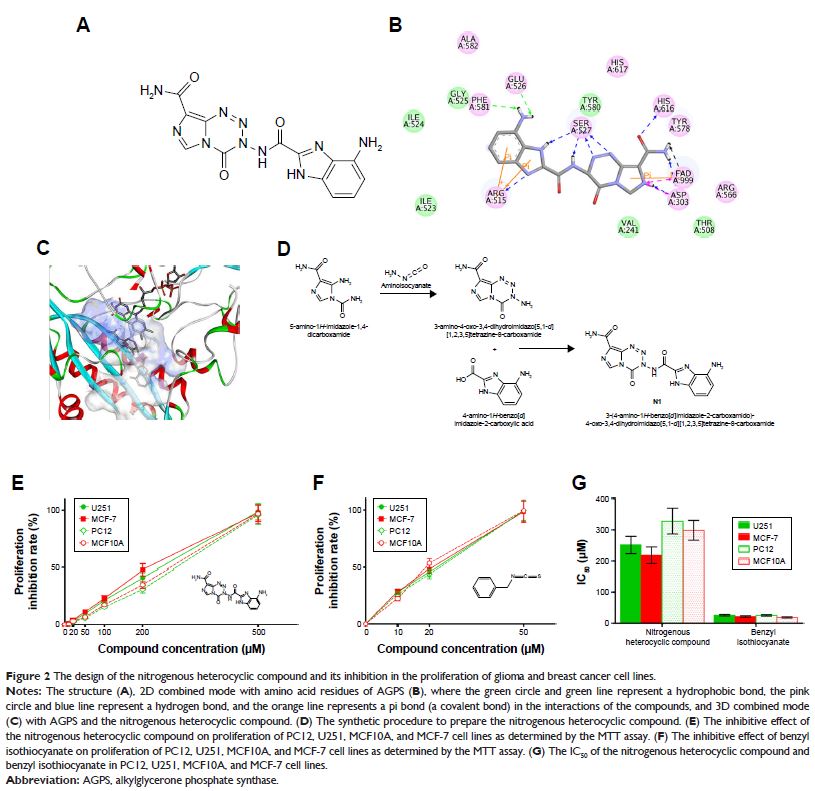9 0 4 9 6
论文已发表
注册即可获取德孚的最新动态
IF 收录期刊
- 2.6 Breast Cancer (Dove Med Press)
- 3.9 Clin Epidemiol
- 3.3 Cancer Manag Res
- 3.9 Infect Drug Resist
- 3.6 Clin Interv Aging
- 4.8 Drug Des Dev Ther
- 2.8 Int J Chronic Obstr
- 8.0 Int J Nanomed
- 2.3 Int J Women's Health
- 3.2 Neuropsych Dis Treat
- 4.0 OncoTargets Ther
- 2.2 Patient Prefer Adher
- 2.8 Ther Clin Risk Manag
- 2.7 J Pain Res
- 3.3 Diabet Metab Synd Ob
- 4.3 Psychol Res Behav Ma
- 3.4 Nat Sci Sleep
- 1.9 Pharmgenomics Pers Med
- 3.5 Risk Manag Healthc Policy
- 4.5 J Inflamm Res
- 2.3 Int J Gen Med
- 4.1 J Hepatocell Carcinoma
- 3.2 J Asthma Allergy
- 2.3 Clin Cosmet Investig Dermatol
- 3.3 J Multidiscip Healthc

新型含氮杂环化合物的计算机辅助药物设计及其对胶质瘤 U251 细胞和乳腺癌 MCF-7 细胞的抑制作用
Authors Qian L, Zhu Y
Received 14 March 2018
Accepted for publication 1 May 2018
Published 27 June 2018 Volume 2018:12 Pages 1931—1939
DOI https://doi.org/10.2147/DDDT.S168130
Checked for plagiarism Yes
Review by Single-blind
Peer reviewers approved by Dr Colin Mak
Peer reviewer comments 6
Editor who approved publication: Dr Anastasios Lymperopoulos
Background: Glioma
and breast cancer are severe malignant cancerous tumors that highlight the
importance of developing new anti-cancer drugs. The aim of this study was to
explore the effects of a novel nitrogenous heterocyclic compound on glioma and
breast cancer cells and to determine its mechanism of action.
Methods: We designed and synthesized a novel nitrogenous heterocyclic
compound,
3-(4-amino-1H-benzo[d]imidazole-2-carboxamido)-4-oxo-3,4-dihydroimidazo[5,1-d][1,2,3,5]tetrazine-8-carboxamide,
based on alkylglycerone phosphate synthase (AGPS) using computer-aided drug
design (CADD), and we measured its effect on the proliferation, invasion, cell
cycle and apoptosis of U251 glioma and MCF-7 breast cancer cells. In addition,
the compound’s effect on the expression of tumor-related mRNA, circular RNAs
(circRNAs) and long non-coding RNAs (lncRNAs) was explored.
Results: It was found that the nitrogenous heterocyclic compound could
induce cell cycle arrest at the G2/M phase of U251/MCF-7 cells and activate
apoptosis. Real-time PCR showed that the expression levels of tumor-related
mRNA, circRNAs and lncRNAs were impacted.
Conclusion: We concluded that the nitrogenous heterocyclic compound inhibits
the proliferation and invasion of U251 glioma and MCF-7 breast cancer cells
through the induction of apoptosis and cell cycle arrest by regulating
tumor-related genes.
Keywords: nitrogenous heterocyclic compound, glioma, breast cancer,
proliferation, invasion
